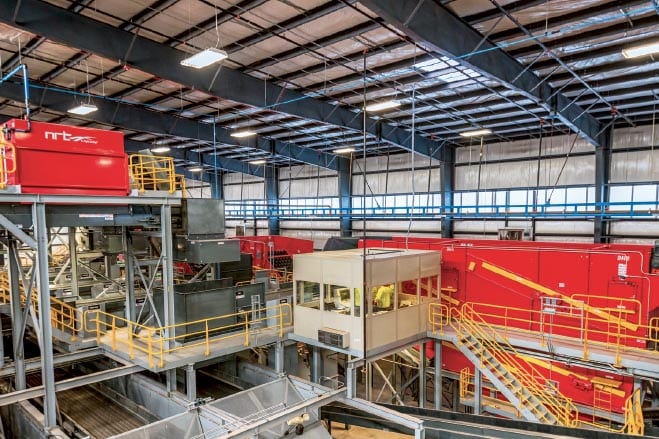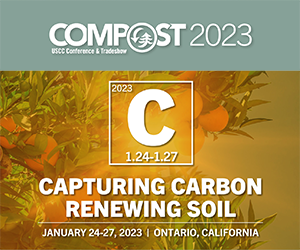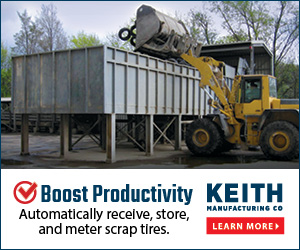
The Sightline database currently has over 5 million data points across the U.S., representing all 50 states, over 3,000 counties and 14,000 disposal and recovery facilities. | Resource Recycling file photo
With new state laws requiring more and more reporting of waste generation and diversion data, the Re-TRAC team launched a detailed database to improve efficiency and information sharing.
Rick Penner, president of Emerge Knowledge Design, the company behind Re-TRAC, said the drive to expand Re-TRAC’s offerings is “because data is critical.”
“Good data, access to good data, efficient and affordable access to data, is really important for the industry, government, organizations and everyone else too,” he told Resource Recycling.
Re-TRAC Sightline builds on and compliments Re-TRAC Connect, which was launched in 2011. The new service centralizes material management information and supports existing data collection activities, a press release noted. Penner said it took about two years to build Sightline.
“Providing instant access to an ever-growing library of pre-assembled materials management analytics, Re-TRAC Sightline is eliminating the painstaking waste and recycling data wrangling process for sustainability professionals,” the press release explained.
Penner said many people are familiar with Re-TRAC already, because they’ve been in the data organization industry for a long time.
“This is an extension of that service and a brand new way that Re-TRAC is going to help people access data,” he said.
The Sightline database currently has over 5 million data points across the U.S., representing all 50 states, over 3,000 counties and 14,000 disposal and recovery facilities.
Re-TRAC Sightline bridges gaps in data availability “that would otherwise hinder decision-making and program improvement,” the press release stated. At first, subscriptions will only be available to government agencies, but Penner said the plan is to open up to all interested organizations in 2023.
While Re-TRAC built the architecture of Sightline and is managing the service, it’s collaborating with The Recycling Partnership and the Waste Business Journal to feed data into the database, updating it monthly.
Penner said anyone who is interested in being a data provider should reach out, because “we’re open to having those conversations.”
Sharing vital information
Penner said Re-TRAC Sightline’s value is based on a simple fact: “You need good data to understand what’s going on, to make changes, to divert more and to improve how the system operates.”
“Sightline is going to provide that as a centralized database,” he said. “We’re bringing together a lot of different types of data and a lot of different categories of data. It’s really important because Sightline is going to help make good quality, trusted data available to folks in a much more efficient way.”
In the press release Tom Fox, director of Indiana’s Allen County Department of Environmental Management, said Re-TRAC Sightline “enables us to look at real-time data from a variety of communities throughout the state to evaluate what we’re doing and how to do it better.”
“My department provides programs and services to a large area,” Fox added. “We are always interested in comparing ourselves to other counties to make sure our operations are as efficient and cost-effective as possible.”
It helps that Re-TRAC has been a trusted player in data reporting for more than two decades, Penner added. The company has been doing national webinars with the U.S. EPA for years, and “we’re positioned to support all things related to better measurement and better data collection in the waste management recycling space.”
“We’re capable of producing a really key service to what everybody is working toward, which is a better recycling system in the U.S.,” he said.
In addition, a centralized national database will help standardize and harmonize data. Penner said as part of building Sightline, Re-TRAC worked with several national organizations to craft a standard set of definitions and terminology for the data.
Adding more data
A big future goal for the Re-TRAC Sightline team is to expand the amount of material management data in the system and add more categories of data, Penner said.
“There’s a whole long list of data categories that is on our roadmap to add over time,” he added, and he’s always looking for users to share what additional data they would find useful so it can be added.
The initial response from customers has been positive, and “we’re at the beginning of the long process now of getting the word out about it and letting folks know that it exists,” he said.
More stories about data
- Recycling facility fires expected to reach new high
- WM report suggests 2025 goal is out of reach
- Michigan hits record recycling rate, awards millions in grants



